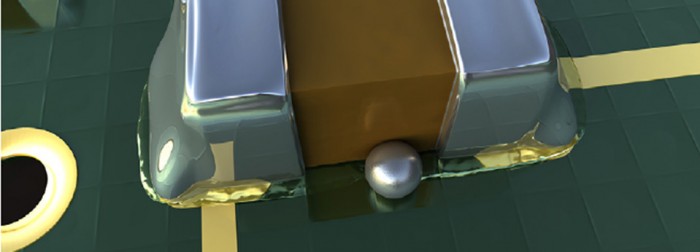SaveSave
Solder Redefined Part 2 – Die-Attach
Seth Homer: As discussed in video one of this four video series, there are three attach levels of peak concern in the IGBT stack up. By redefining how we use solder at the die-attach, DBC Substrate, and Baseplate level, we can achieve a more reliable IGBT that can form at increasingly higher standards. If you missed that video, be sure to check it out at www.indium.com/IGBT.
Today, we're addressing the die-attach level specifically. Given the aforementioned demand increase in IGBTs, reliability performance starts here. Dies are delicate to begin with, but after they are subjected to the rigors of power cycling, the choice of attachment becomes all that much more important.
There are three key factors that contribute to die failure as it pertains to the attach method. Voiding, bondline thickness, and bondline planarity.
Voiding can be hazardous symptom of poor wetting and contamination. Without a metallurgical relationship between the solder and the joining surfaces, there is no wetting force to push out volatiles caused by contamination. This phenomenon can also occur where poor alloy choice and processed temperatures are concerned. All of this can literally make or break die performance.
When it comes to bondline thickness, a thinner bondline intuitively indicates a better thermal path. While this is true, it does not always translate to long-term reliability. What an ultra-thin bondline can also produce is a weak joint, and no bulk solder to buffer the intermetallic layers.
Finally, while bondline planarity is important at all levels, it is of the utmost importance at the die level. If the bondline has a thinner side, this can result in delamination or cracking due to uneven stress. So how can you achieve superior performance at the die-attach level? The answer is ultra-pure solder alloys designed and manufactured for die-attach grade use. This will ensure successful wetting and low voiding in a fluxless attach system.
Indium Corporation offers semiconductor-grade ribbon and preforms in ultra-pure alloys. These materials are available in adaptable packaging such as tape and reel, custom spools, and waffle trays to increase productivity, performance, and efficiencies. In cases where a flux is needed, we provide flux-coating formulations that achieve minimal voiding and good wetting.
Indium Corporation's LV1000 flux coating for solder preforms consists of both a unique flux formulation and application process to produce flux coated solder preforms that meet the tightest tolerances for flatness. This minimizes defects by ensuring the electronic components solder correctly.
For more information on materials for die-attach and IGBT, visit indium.com/IGBT. If you have any questions, please feel free to contact me directly, [email protected].


